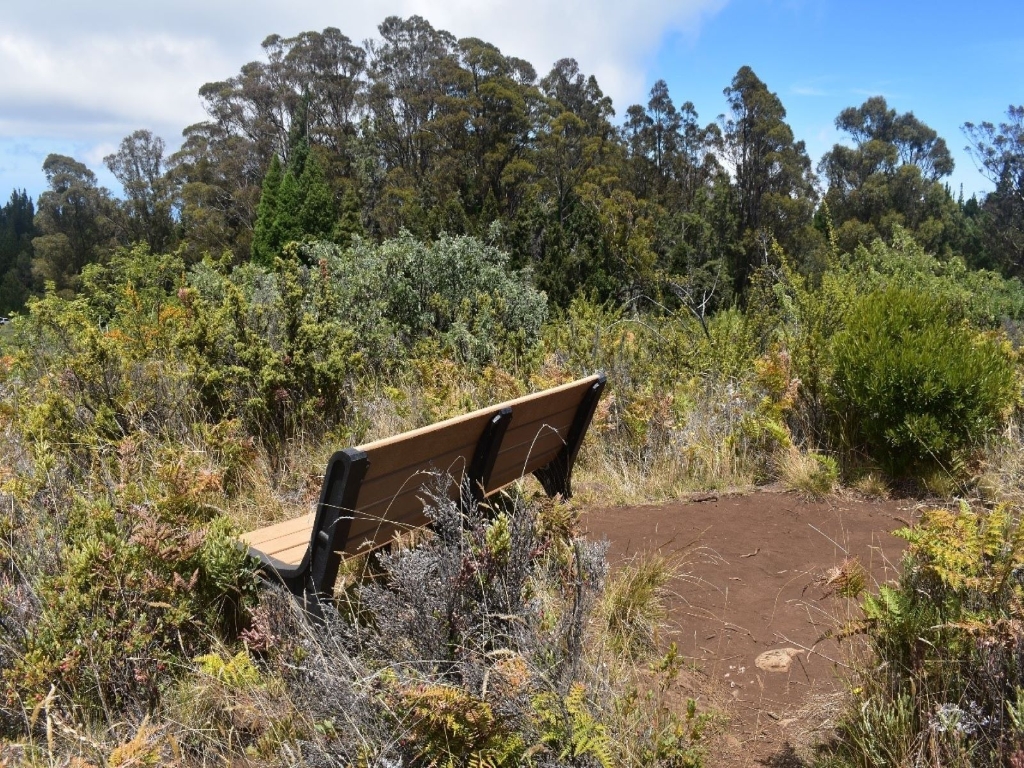
At this location you are near the park’s northern boundary looking down towards the ocean. This native shrubland is a remnant of the plants and trees that once blanketed every side of Haleakalā. Long before humans ever set foot upon the Hawaiian archipelago millions of years ago, native plants, insects, and birds arrived on these slopes through wind, water, and wings.
They built a pilina (interconnection) into a tight diversity of life that’s dependent on each other. Along this stretch of trail look for plant identification signs pointing out different shrubs.
Many of these plants serve in critical roles to provide food and homes for other endemic and endangered species, including the nēnē (Hawaiian goose). Berries from the shrubs of ʻōhelo, kukaenene, and pukiawe provide key food sources. Shrubland foliage is also critical to the geese for nesting season. Yellow flowers of the māmane tree provide nectar for native ʻiʻiwi honeycreepers. Notice how an ‘iʻiwi’s beak fits perfectly into the curve of a māmane bloom. Please give all wildlife space, never approach or feed them, and drive cautiously along park roadways.
Hosmer Grove is a stark contrast to a native shrubland around you, what are some of the differences you observe? Curiosity continues through ongoing studies on Hosmer's forested plots, giving researchers a chance to see how the introduced tree species cohabitate with native birds, insects, and their affect on native vegatation.
Is there something we missed for this itinerary?
Itineraries across USA


















































